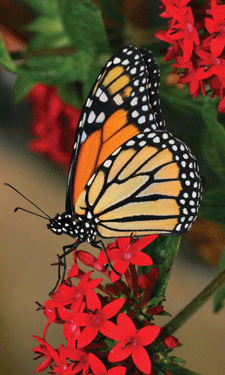 NRPA members are stepping up to join the fight to save the threatened monarch butterfly. Many park and recreation agencies are starting to plant milkweed seeds and plants to create monarch waystations as well as tackle larger habitat restoration projects, planting hundreds of milkweed plants along with other nectar-bearing plants beneficial for a wide variety of pollinator species.
NRPA members are stepping up to join the fight to save the threatened monarch butterfly. Many park and recreation agencies are starting to plant milkweed seeds and plants to create monarch waystations as well as tackle larger habitat restoration projects, planting hundreds of milkweed plants along with other nectar-bearing plants beneficial for a wide variety of pollinator species.
You have read in Parks & Recreation magazine and elsewhere that monarchs are in grave trouble. The Eastern population of monarchs once numbered almost a billion individuals as recently as the mid-1990s, but numbers have plummeted almost 95 percent and there are few signs of a rebound.
The causes of monarch decimation are many, but there is one bright hope to return the species to its former abundance. If you plant milkweed, you can begin to help save the monarch. Milkweed is essential to the monarch’s lifecycle. Migrating monarchs lay their eggs on the underside of milkweed leaves and the caterpillars that hatch eat the leaves, growing larger before their metamorphosis into adult monarchs, which then continue on their migration route. It is one of the most marvelous and mysterious migrations of nature, and we all have the opportunity to witness it in our parks and backyards.
So, what can you do? First, you need to plant milkweed seeds and plants in a suitable habitat. The good news is that milkweed will grow just about anywhere and it is a hardy plant that needs little care. You must plant milkweed seeds and plants that are appropriate for your region, however, from seeds that were collected from your region. Monarch Watch, the nonprofit education and conservation organization out of Kansas University that propagates and sells milkweed seeds, has a wealth of information on its website, including a bio-region map that shows where the regions are and what seed and plants are available for purchase. If you do nothing else, visit the Monarch Watch website and see what information and resources are available.
NRPA is doing some exciting things for monarch conservation, and you will be hearing about them in this magazine, through social media, NRPA’s Open Space blog and on our website. We also want to hear what you are doing to save the monarch!
Richard J. Dolesh is NRPA’s Vice President of Conservation and Parks.
Milkweed Resources
There are multiple sources of free milkweed seeds and plants from quantities as small as a few packets of seeds to a pallet of hundreds of milkweed plants. You can also collect your own milkweed seeds and grow plants from seed, especially if your agency has plant propagation capabilities. Don’t have your own greenhouses? Try partnering with a local nursery to grow seeds that your citizen volunteers collect. Be sure to request your milkweeds are not treated with neonicotinoid insecticides.
- Find a single flat (32 plants) from Monarch Watch
- For larger quantities of seed, the U.S. Department of Agriculture has partnered with the National Park Service to provide seed packets for distribution to schools and parks.
- Find restoration project quantities of 200 to 1,400 plants from Monarch Watch. The plants are free, but you must pay the shipping costs which are nominal.

